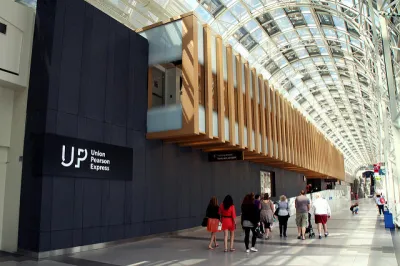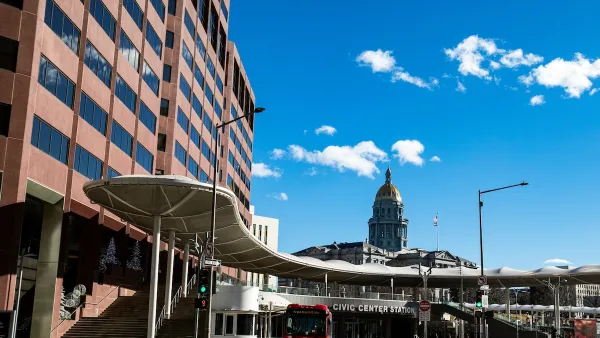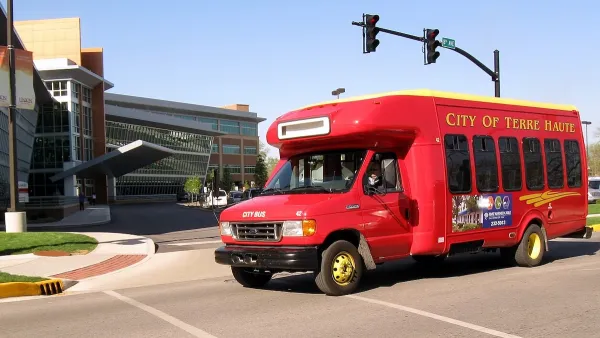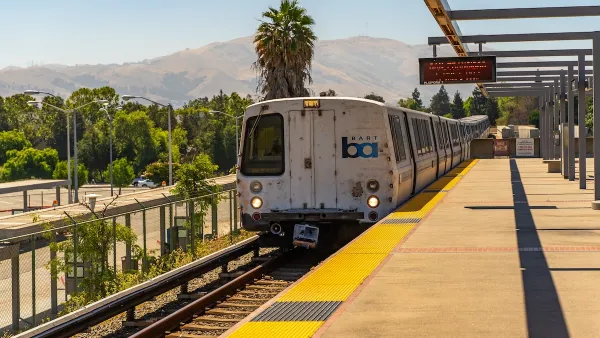Faced with the underwhelming performance of the newly opened UP Express, Toronto transit officials did something drastic: they slashed the cost of a ride.

Sean Marshall reports on lessons learned from the ongoing evolution of the Union Pearson Express (UP Express), Toronto's16-month-old rail connection between Pearson International Airport and Union Station in downtown Toronto.
For the first year of its operation, the UP Express operated well below its ridership targets. "In June 2015, UP Express had an average daily ridership of 2,858; in July, the average daily ridership was 2,383," according to Marshall. "Metrolinx expected that daily ridership would grow to 5,000 within a year."
Earlier this spring, just under a year before the line's first birthday, Metrolinx took decisive action and reduced the one-way cash fare "from $27.50 to $12, and from $19 to $9 with a Presto card, and fares between Union and Bloor and Weston stations were reduced to match the GO Transit fares for the same trips." Previously "the one-way fare between Union Station and Pearson airport was set at $27.50, or $19.00 with a Presto card. Discounts and special fares were available for families, airport workers, and same-day return trips," explains Marshall.
The results, in terms of ridership, have been unequivocally positive. "Since the new fare structure was introduced, UP Express ridership has more than tripled. By June 2016, the daily average ridership increased to 7,657, or 49 passengers per train."
FULL STORY: Ridership Has Tripled on Toronto’s Union Pearson Express

National Parks Layoffs Will Cause Communities to Lose Billions
Thousands of essential park workers were laid off this week, just before the busy spring break season.

Retro-silient?: America’s First “Eco-burb,” The Woodlands Turns 50
A master-planned community north of Houston offers lessons on green infrastructure and resilient design, but falls short of its founder’s lofty affordability and walkability goals.

Delivering for America Plan Will Downgrade Mail Service in at Least 49.5 Percent of Zip Codes
Republican and Democrat lawmakers criticize the plan for its disproportionate negative impact on rural communities.

Test News Post 1
This is a summary

Test News Headline 46
Test for the image on the front page.

Balancing Bombs and Butterflies: How the National Guard Protects a Rare Species
The National Guard at Fort Indiantown Gap uses GIS technology and land management strategies to balance military training with conservation efforts, ensuring the survival of the rare eastern regal fritillary butterfly.
Urban Design for Planners 1: Software Tools
This six-course series explores essential urban design concepts using open source software and equips planners with the tools they need to participate fully in the urban design process.
Planning for Universal Design
Learn the tools for implementing Universal Design in planning regulations.
EMC Planning Group, Inc.
Planetizen
Planetizen
Mpact (formerly Rail~Volution)
Great Falls Development Authority, Inc.
HUDs Office of Policy Development and Research
NYU Wagner Graduate School of Public Service





























